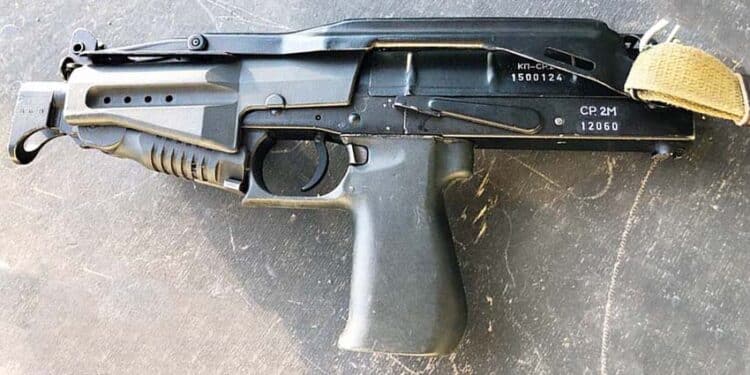By Lynndon Schooler
In the new millennium, the young Russian state needed a main sidearm—something modern, hearty and comparable in size and function to NATO pistols. Paramount to the modern Russian fighting pistol, codenamed “Grach,” within the Russian Army trail program, was the newly adopted 9x21mm armor piercing SP-10 ammunition. This new “wonder round” was developed by the famous Central Research and Development Institute of Precision Machine Building, known by its Russian acronym TsNIITochMash, to be used in their “snub-nosed viper” pistol, the Gyurza, aka the SR-1. Pyotr Serdyukov, lead designer of the pistol, resolved to develop a submachine gun to accommodate the new round.
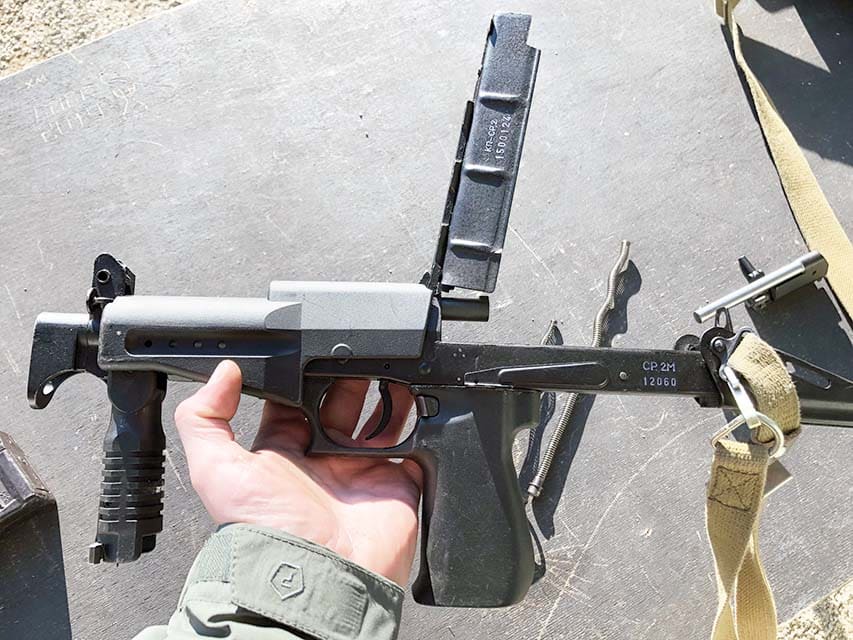
Ammo
The 9x21mm SP-10 special cartridge uses a 103-grain projectile and has a muzzle velocity of 1245 feet per second from the SR-1 pistol. Per Russian naming standards from the Main Missile and Artillery Directorate, it is recognized by the Ministry of Defense of the Russian Federation as the 7N29, “7N” noting ammunition. Another 9x21mm cartridge, the SP-11, is designated as 7N28 and uses a full-metal jacket ball round. This makes it ideal for use on unprotected personnel and as a training round due to its lower cost and reduced ricochet. The SP-11 has a 121-grain projectile and a muzzle velocity of 1279 feet per second from an SR-1 pistol. The Russians also provide the SP-12, a 9x21mm jacketed hollow-point cartridge when expanding ammunition is needed. To date, the SP-10 armor piercing round is the most commonly fielded round from the SP family.
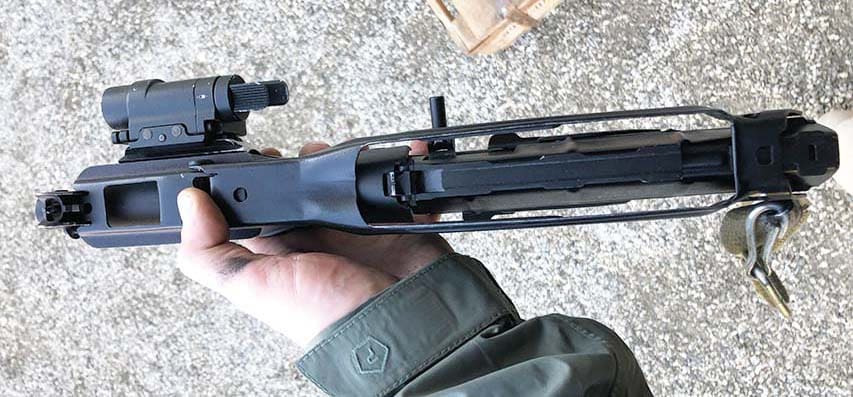
Purpose
The FSB (Federal Security Service) was the first organization to vocalize interest in a potential submachine gun chambered for the potent SP-10 cartridge. They communicated their desire to Serdyukov in the mid-1990s to create such a special purpose weapon. The result was the SR-2 (Spetsialnaya Razrabotka–Special Development), named Veresk, after the Eurasian flower, heather. In the early 2000s, the SR-2 entered service in the hands of FSB Spetsnaz and other special units such as OMON (Special Purpose Mobile Unit) of Russian law enforcement and SOBR (Special Rapid Response Unit) under the Russian National Guard. In practice, the SR-2 provides good armor penetration characteristics up to 40 meters and an effective range of 150–200 meters, with significant stopping power. The Veresk is exceptionally compact for its class, lightweight and concealable. As such, it is a favorite of special unit entry shield men, who may use the weapon with one hand, without sacrificing stopping power and ergonomics.
Differing from most submachine guns, the Veresk is gas-operated with a rotating bolt, using a striker-fired floating hammer. This allows the receiver to be even more compact. An ergonomic fire control layout allows for a right-handed shooter to operate the safety with his index finger on the right side of the weapon and the selector switch with his thumb on the left. An ambidextrous magazine release is placed behind the trigger group, and a folding charging handle protrudes on the right side from the ejection port. A vertical foregrip is located just below the muzzle behind the removable hand stop. The hand stop may be removed to accommodate attaching a suppressor.
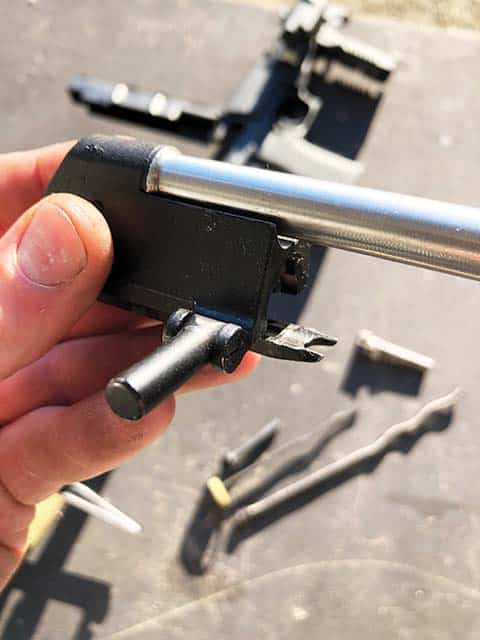
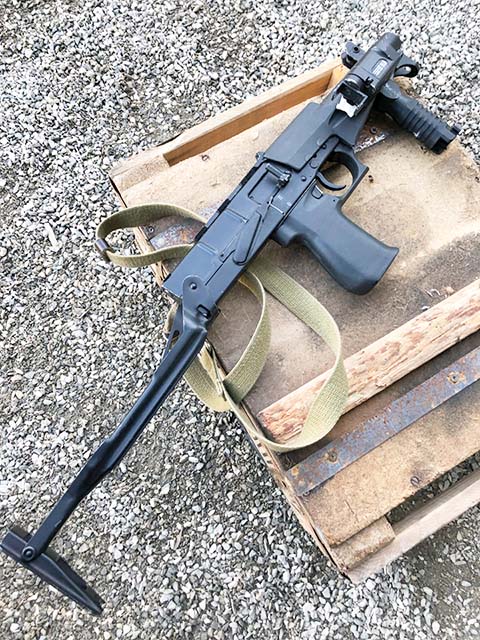
TsNIITochMash designed the KP-SR-2 collimator sight specifically for the SR-2M to mount on top of the weapon, while simultaneously accommodating the top folding stock without interference. This feature required a stock redesign SR-2 to the SR-2M to allow this feature. To unfold the stock, the buttplate is pulled rearward, unlocking from the front sight. To fold the stock, a button on the bottom of the receiver is depressed and the stock can be folded over the top of the receiver. A special additional stock may be used to clear helmet face shields and is attached using a bracket securing to the original stock’s release button. Engaging this button will allow the face-shield stock to be completely removed from the weapon.
The stock is a simple wire, swooping down to clear a helmet face shield, and a simple rubber butt pad covers the back. The Veresk is fed from a 20- or 30-round, double-stack, double-feed magazine, that inserts into the pistol grip/ magazine well. At 900 rounds per second, the weapon is surprisingly controllable based on its size and weight.
After years of use, Special Force operators have noted some needed improvements to the design. Specifically, the folding charging handle and the folding vertical foregrip present some issues. The folding charging handle may be accidentally bumped closed. In the folded position, this adds an inconvenient step to reloading the weapon, especially under pressure as the weapon does not have a last round hold-open or a bolt release. One operator recalled striking a combatant in the face with the weapon and breaking off the foregrip as it was deployed in the down position. However, this move may have been outside the weapon’s design parameters but was nonetheless a need that arose in a life or death situation.
An Upgrade
The SR-2 was later upgraded to the SR-2M, swapping the screwed-in vertical grip to a folding vertical grip. The removable hand stop was added just rearward of the muzzle. The stock was redesigned to be folded and extended with a reflex sight in place. Coming to a total weight of 3.6 pounds, the SR-2M is a light submachine gun package providing sufficient fire and stopping power. The original SR-2 can still be found in units using older weapons or, as one Special Forces instructor said, those units with reduced budgets. The latest SR-2MP includes additional M1913 accessory rails on the left and right side of the handguard and on the top of the receiver in the place of sights. The SR-2MP remains available for export to partner nations and has shown its ability to modernize alongside contemporary force multipliers.
| This article first appeared in Small Arms Review V23N9 (Nov 2019) |



